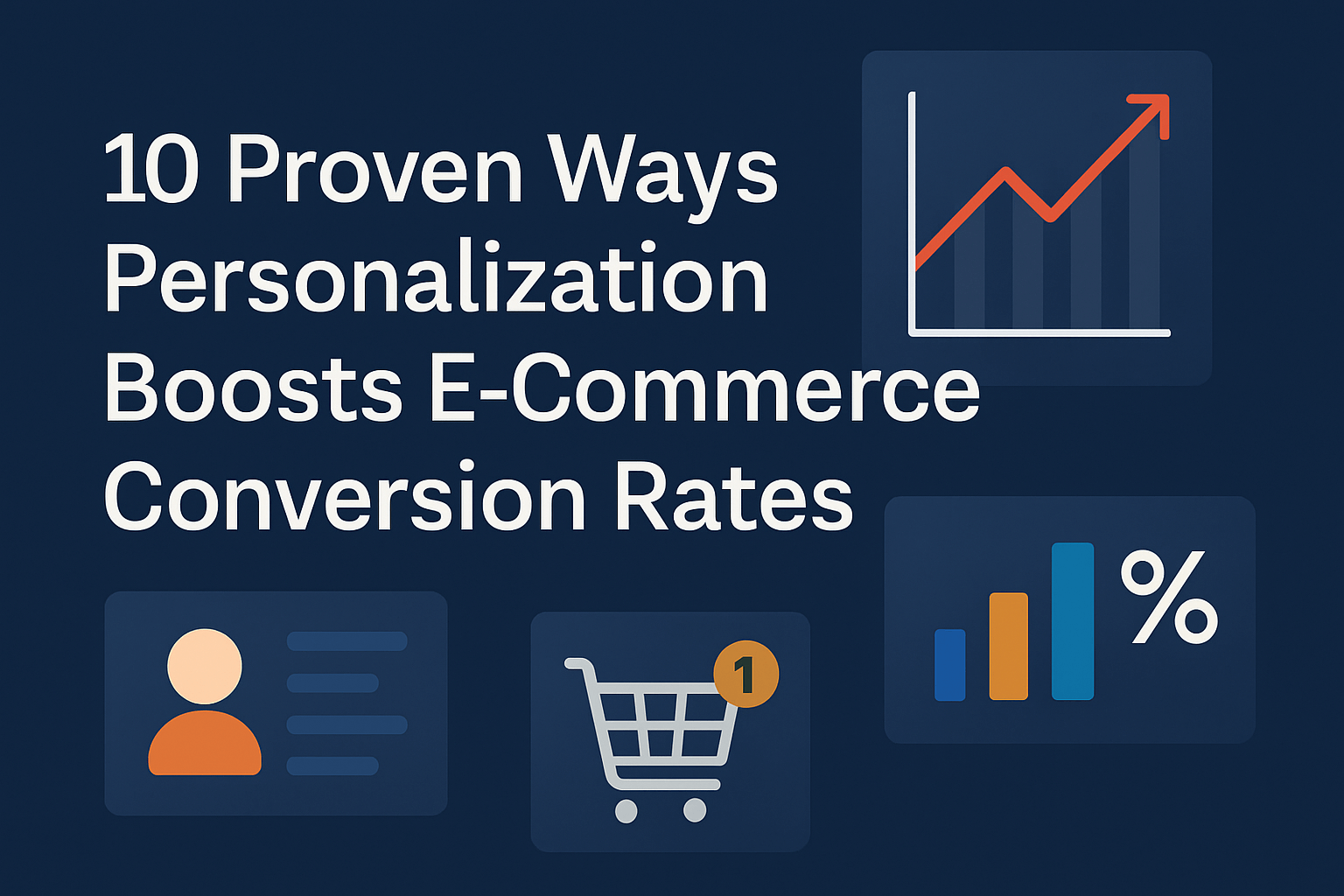Ecommerce content optimization - strategies to drive conversions
Effective content optimization is crucial for ecommerce businesses that want to stand out in a crowded market and convert visitors into buyers. Ecommerce content optimization involves enhancing product descriptions, landing pages, blog posts, and other site content to attract and engage customers, boost search engine rankings, and ultimately increase sales.
Here, we’ll cover some key strategies for optimizing ecommerce content, focusing on actionable tips for creating high-impact content that resonates with your target audience and drives business growth.
1. Prioritize high-quality product descriptions
A successful ecommerce content optimization strategy starts with high-quality product descriptions. Your product descriptions should do more than just list features - they should engage, inform, and encourage a purchase decision.
Tips for optimizing product descriptions:
- Focus on benefits. While it's essential to list product features, your description should emphasize the benefits those features provide. For instance, instead of simply mentioning that a coat is “waterproof,” highlight how it “keeps you dry and comfortable during rainy weather.”
- Use keywords naturally. Integrate relevant keywords and product-specific terms naturally into the content to improve search visibility.
- Incorporate descriptive language. Use sensory and descriptive language to paint a vivid picture of the product. This is especially effective for fashion, food, and beauty items, where customers want to envision the experience of using the product.
2. Leverage customer reviews and User-Generated Content
User-generated content (UGC), including customer reviews, photos, and videos, provides authentic insights that can enhance the credibility of your brand. Featuring UGC on product pages can serve as social proof, helping to build trust and influence purchase decisions.
How to use UGC effectively:
- Display customer reviews. Highlight reviews on product pages to showcase customer satisfaction. Reviews can also serve as valuable sources of additional keywords and phrases customers use to describe the product.
- Encourage customers to share photos. If your products are visual or lifestyle-oriented, ask customers to share photos of their purchases on social media or your website. This creates engaging content and helps customers visualize the product in real-world settings.
- Use testimonials on key pages. Showcase testimonials on landing pages to reinforce trust and credibility, especially for high-value or complex products.
3. Optimize for Search Engines (SEO)
Search engine optimization (SEO) is a fundamental component of ecommerce content optimization. SEO helps ensure that your products and content appear prominently in search engine results, increasing visibility and driving organic traffic.
Essential SEO strategies for ecommerce:
- Keyword research. Conduct thorough keyword research to identify terms that your target customers are searching for. Incorporate these keywords strategically into product descriptions, category pages, and blog content.
- Optimize titles and meta descriptions. Use descriptive and compelling titles and meta descriptions that include primary keywords. These elements impact click-through rates in search engine results.
- Optimize image Alt Text. Add keyword-rich alt text to images. Alt text improves accessibility and helps search engines understand what each image represents, which can boost your search rankings in image searches.
4. Create engaging category and landing pages
Category and landing pages are critical for ecommerce businesses because they help customers navigate the site and find relevant products. Well-optimized category pages improve the user experience, make browsing easier, and support SEO efforts.
Optimization tips for category and landing pages:
- Use descriptive headings. Use clear and descriptive headings that incorporate keywords related to the category. For example, for a category page on “Women’s Winter Coats,” consider using “Shop Women’s Winter Coats” or “Stylish and Warm Coats for Women.”
- Provide informative content. Briefly describe the products and their benefits on category pages. This adds value for customers and increases keyword relevance for search engines.
- Add internal links. Guide users to related products or popular pages through internal links. Internal linking improves site structure and encourages visitors to explore additional products.
5. Develop informative and relevant blog content
Blog content allows ecommerce companies to address a variety of topics relevant to their target audience, helping to attract traffic, establish authority, and nurture potential leads. Optimized blog content can bring in customers at different stages of the buyer journey and encourage conversions.
Blog content optimization tips:
- Answer customer questions. Write blog posts that address frequently asked questions or concerns about your products. For example, if you sell skincare products, create posts about common skincare issues, solutions, and product recommendations.
- Focus on long-tail keywords. Long-tail keywords are more specific search terms, often in the form of questions or phrases, that can help attract high-intent visitors. Use long-tail keywords naturally in blog titles, headings, and throughout the post.
- Incorporate visuals and multimedia. Use images, videos, and infographics to break up text and make your content more engaging. Visuals are particularly effective for tutorials, styling guides, or comparison articles.
6. Optimize for mobile users
With more customers browsing and shopping on mobile devices, ecommerce sites must prioritize mobile optimization as part of their content strategy. A mobile-friendly site ensures that your content looks and functions well on smaller screens, which can improve conversions.
Mobile optimization tips:
- Use responsive design. Ensure that your site is fully responsive, automatically adapting to different screen sizes and orientations.
- Simplify navigation. Mobile users should be able to navigate your site easily. Use a streamlined layout and concise menus to reduce friction.
- Minimize load times. Mobile users expect fast-loading pages. Compress images and avoid heavy scripts to keep your site speed high.
7. Implement A/B testing for continuous improvement
To ensure that your ecommerce content optimization efforts are effective, implement A/B testing to compare different versions of pages and elements. Testing lets you determine which approaches resonate most with your audience and lead to higher conversions.
Ideas for A/B testing:
- Headlines and CTAs. Test different headlines, copy, and calls-to-action (CTAs) on product and landing pages to see which drives more conversions.
- Image choices. Experiment with different product images to find out which visuals encourage more engagement.
- Form length and placement. For lead-generation pages, test different form placements and field lengths to optimize for conversions.
Conclusion
Effective ecommerce content optimization requires a mix of high-quality product descriptions, SEO strategies, engaging visuals, and continuous testing. By focusing on creating valuable, engaging, and informative content that resonates with your target audience, you can drive organic traffic, engage customers, and boost conversions.
With these strategies in place, your ecommerce website will be better positioned to compete in the digital marketplace. Implementing these ecommerce content optimization tips will not only improve your site’s search engine performance but also deliver a more compelling shopping experience for your customers.
Boost your optimization with ConversionWax
Optimize, personalize and schedule your content in seconds with ConversionWax. Start your free trial today.
-

10 Proven Ways Personalization Boosts E-Commerce Conversion Rates
-

How to increase your website sales
-

Mastering ecommerce product page optimization
-

Ecommerce content optimization - strategies to drive conversions
-

Product page SEO best practices
-

Create a winning ecommerce strategy
-

Ecommerce optimization - strategies to boost your online store's performance
-

Ecommerce best practices - how to enhance performance, attract customers, and grow sales
-

How to increase online sales - proven strategies to boost your business
-

How to market a product online - proven strategies for success

